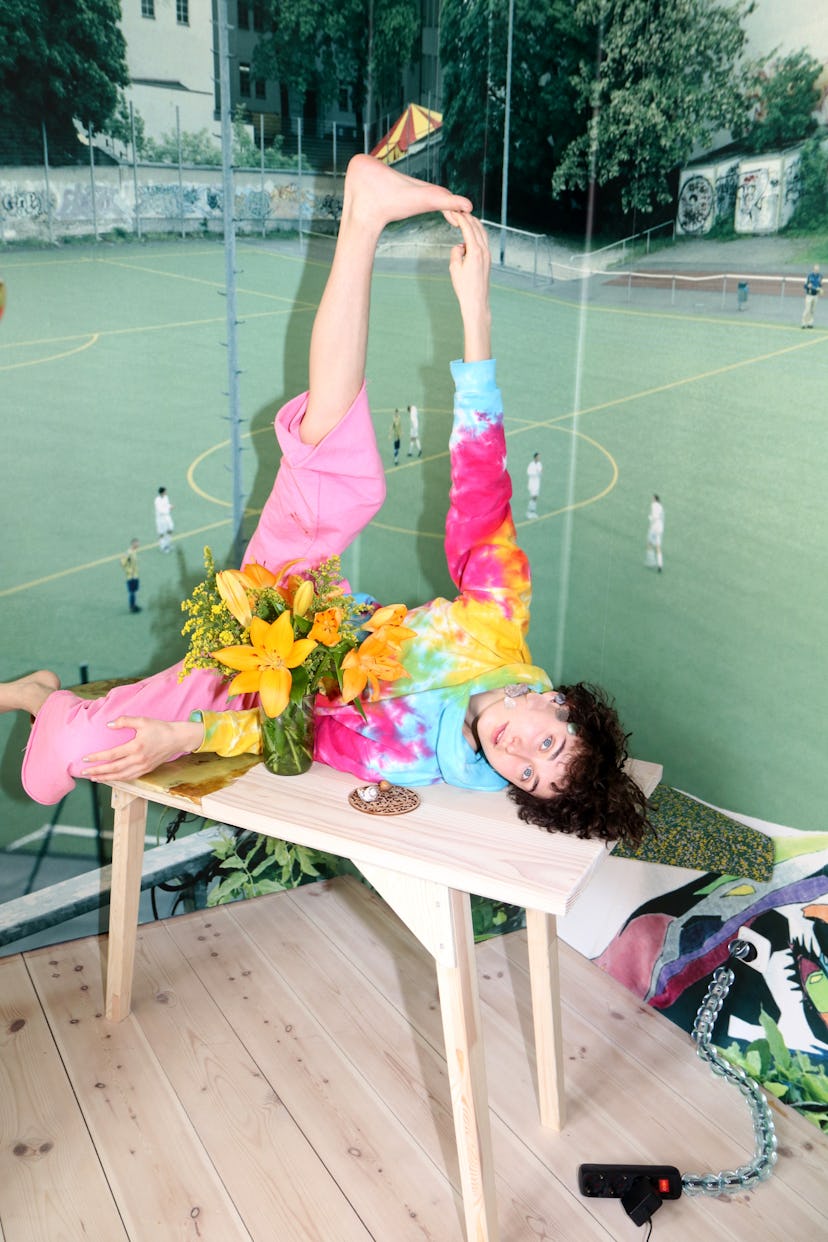Anton Shebetko Documents Ukraine’s Queer History, One Portrait at a Time

A few years into immersing himself in and documenting the LGBTQ+ communities of Ukraine, Anton Shebetko came to a realization: There was no longer such an urgent need to protect the identities of the queer Ukrainians he’d been extensively photographing and interviewing. So while his book A Very Brief and Subjective Queer History of Ukraine begins with a more general timeline (starting all the way back in the 11th century, when homosexuality was mentioned in The Tale of Boris and Gleb), it goes on to fully introduce readers to subjects such as Viktor Pylypenko, one of those he spoke to for his series on mostly closeted LGBTQ+ members of his home country’s military. Ukraine decriminalized homosexual relations in 1991, and while there’s definitely still discrimination in a country that’s largely conservative, Shebekto has noticed a growing acceptance of peers; pride marches are becoming more and more common, and just last month, President Volodymyr Zelensky revealed that the government is considering legalizing “civil partnerships” for same-sex couples.
Determined to expand his archive, Shebetko—who left behind his hometown of Kyiv for Amsterdam with his husband a few years ago—resolved to head back to Ukraine. But when Russian President Vladimir Putin declared war in February, he was forced to change tack. “To Know Us Better,” now on view at Amsterdam’s Foam Fotografiemuseum and Melkweg Expo, features portraits that were taken in the parts of Europe where his Ukrainian subjects fled. (Not just from Ukraine, but also from Lugansk, Donetsk, and Crimea, which Russia has occupied in recent years.)
Some have since returned home—despite, as Shebetko is well aware given his parents’ refusal to leave Kyiv, safety still being a major concern. And in the lengthy interviews that he conducted to accompany each of their portraits, Shebetko learned that many plan to do the same. Determined to make his subjects feel completely seen and understood, he speaks with them at length and gives them free rein to edit and rewrite the text as they please. He also goes with their choice of photo, even if he may not think it’s the strongest option. Funnily enough, Shebetko has returned to airing on the side of anonymity; he now prefers to keep the text and portraiture separate. “For me, it’s about creating a more shared experience about what it is to be a queer Ukrainian,” he says of the exhibitions from Amsterdam over Zoom. Get to know some of those featured in the book a little better, here.
Ilya, featured in the series “To Know Us Better” by Anton Shebetko.
Angelique, featured in the series “To Know Us Better” by Anton Shebetko.
Zhenya, featured in the series “To Know Us Better” by Anton Shebetko.
Klem, featured in the series “To Know Us Better” by Anton Shebetko.
Laslo, featured in the series “To Know Us Better” by Anton Shebetko.
Zosya, featured in the series “To Know Us Better” by Anton Shebetko.
Maksim, featured in the series “To Know Us Better” by Anton Shebetko.
For those looking to support Ukrainians in need, Shebetko is highlighting three charities: Insight, which is supporting LGBTQI+ Ukrainians amid the war with psychological and legal support, medicines, hormones and food, and relocation assistance; Ukraine Emergency Art Fund, which is working to ensure the continuity and development of the Ukrainian cultural process during the war; and Blood Agents, which is procuring tactical medicine to save the lives of wounded soldiers and providing first aid to civilians and emergency workers near the front lines.
This article was originally published on